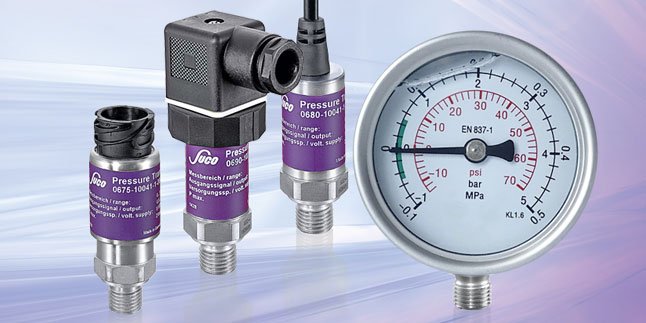Ex.: With an output signal of 4 - 20 mA, 4 mA corresponds to vacuum (-1 bar) and 20 mA corresponds to the positive scale pressure (e.g. 10 bar).
The effectiveness for measuring both vacuum and gauge pressure is limited to lower pressure ranges. Typically, they are used for pressure measurements from +1 to +16 bar (230 PSI) or less. Using a compound pressure transmitter for higher pressure ranges may have negative effects on the measuring accuracy in the vacuum range.
Applications
Compound pressure transmitters are predominantly used in systems where minimal pressure differences between overpressure and vacuum must be measured reliably. Among these are, for example, compressors (vapor recovery + gas compression), pumps (suction + discharge), leak tests of pipelines, test chambers in laboratories and general low-pressure applications.
Other typical applications of compound pressure transducers are building air climate controls and refrigeration equipment (HVAC/R). During normal operation, the transducer measures the positive pressure in the system. In the event of pending maintenance, it measures the negative pressure caused by suction when the system is evacuated.
Customized solutions
Our heavy-duty Compound pressure transmitters Hex22 are available in stainless steel grade 303 (1.4305) or grade 316L (1.4404). They have been specifically designed for use in demanding vacuum and oxygen applications, such as process manufacturing. The oil-filled measuring cell in stainless steel 316L enables high-precision pressure measurement of a wide variety of media within a broad temperature range.
Due to their above-average media compatibility and durability, our compound pressure transducers are used not only in industrial production but also in medical and chemical engineering. In addition to the standard compound pressure range of -1 to +1 bar (V01), other pressure ranges acan be supplied on request.

